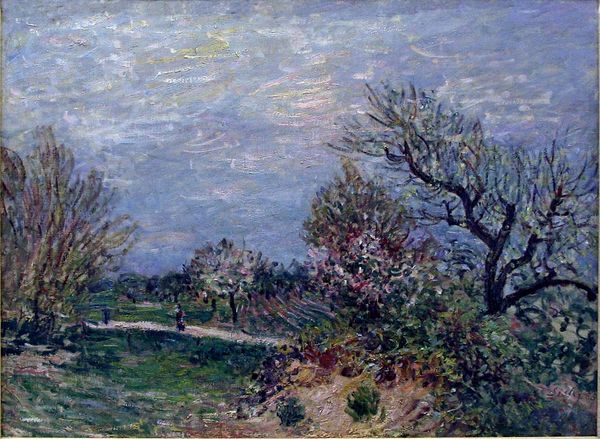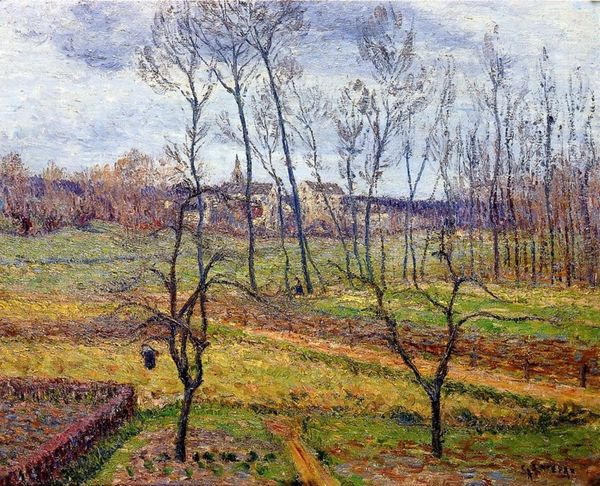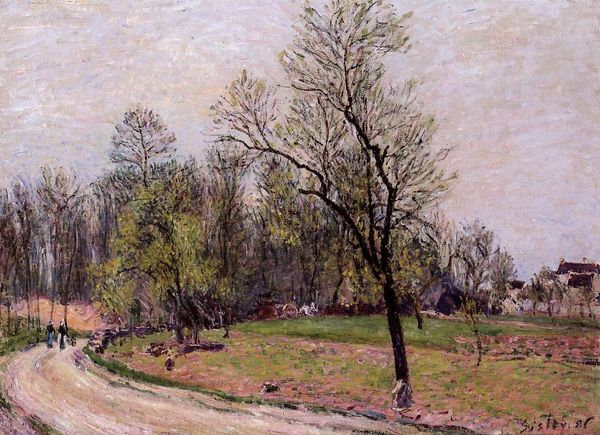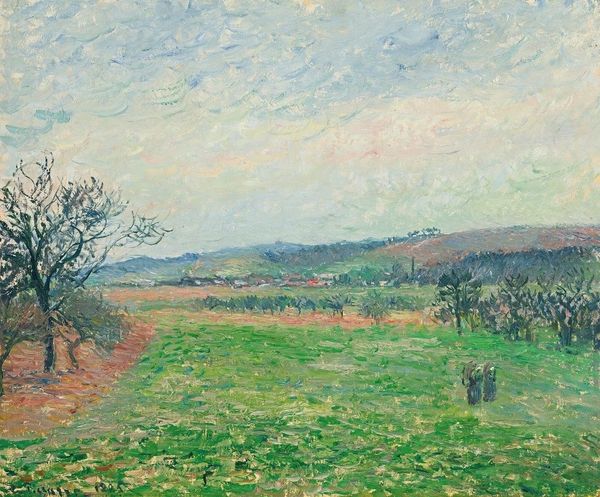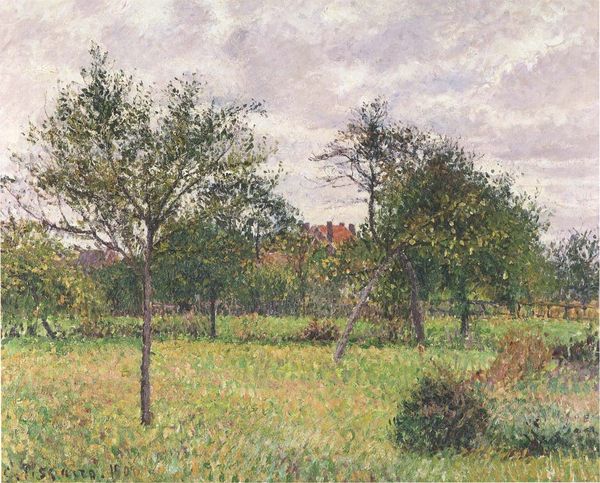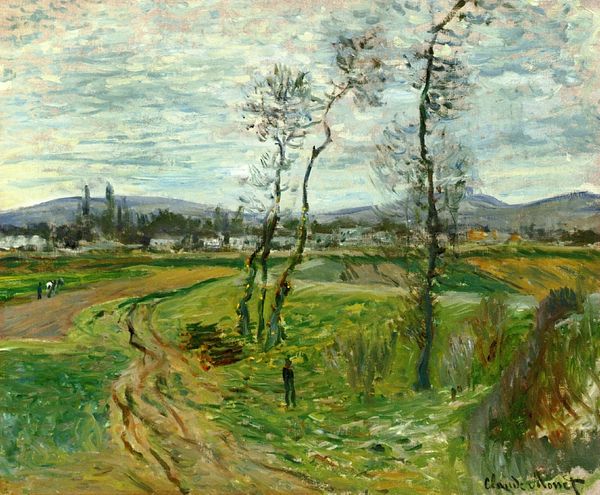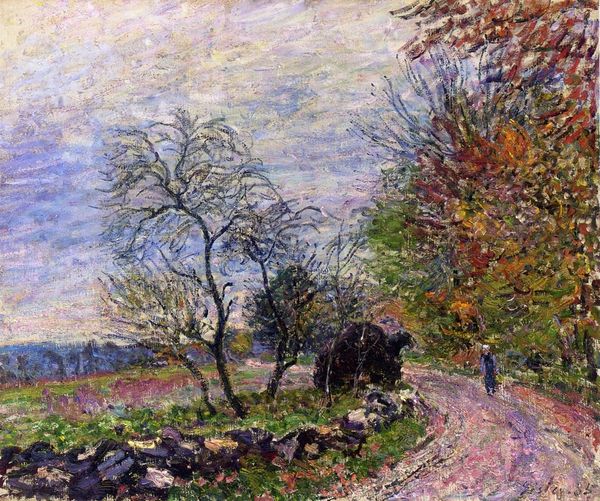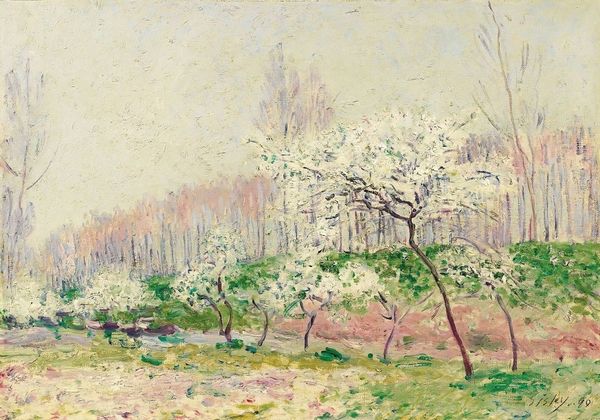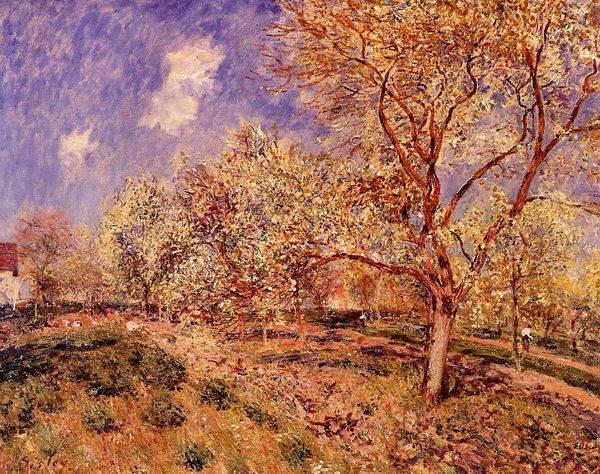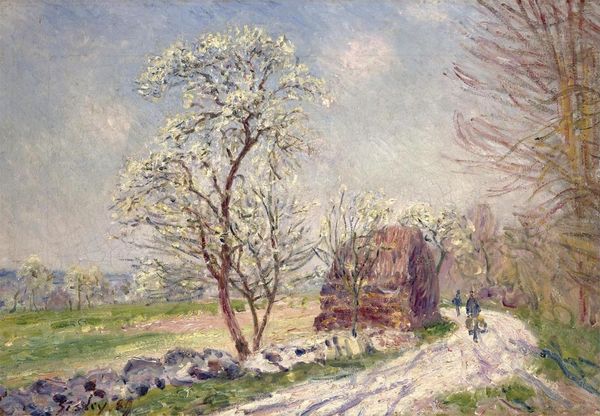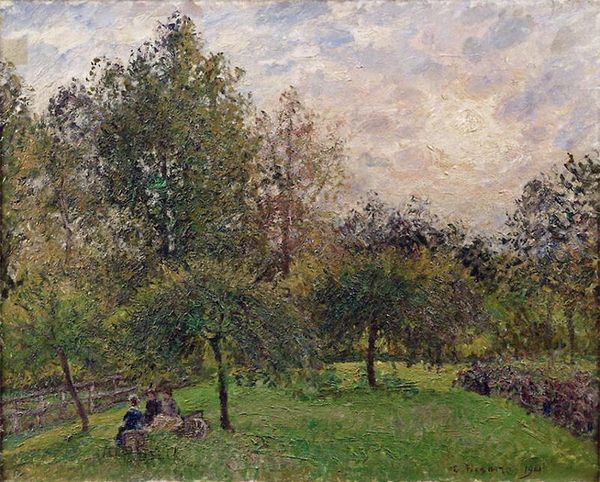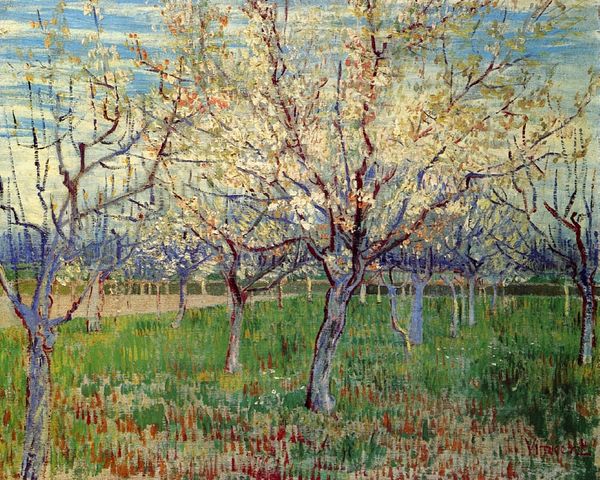
Dimensions: 54 x 73 cm
Copyright: Public domain
Curator: Alfred Sisley's "Between Veneux and By December Morning," painted in 1882, offers us a view of the French countryside rendered in oil paint. There's a crispness in the air here. Editor: It strikes me as quietly melancholic, doesn't it? That bareness of the trees against the overcast sky—it feels like a landscape holding its breath. Curator: Sisley’s paintings were frequently dismissed by critics as being simply about surfaces. I believe this denies that landscape—rural settings particularly—are imbued with the conditions of the working classes, the class-based social codes inherent in nature, which would, inevitably, bring melancholy to some. Editor: And the way he uses color! The subtle gradations of gray and pale greens, juxtaposed with the stark black lines of the branches, almost suggest a winter holding onto spring. It makes me think about the way seasons were a pivotal theme for Romantic-era thinkers, because of their ability to make visible themes of constant transformation. It feels poignant precisely because of its understated nature, a kind of subtle protest to idealized rural depictions. Curator: The Impressionists often focused on capturing fleeting moments. This piece exemplifies their fascination with the transient effects of light and atmosphere, doesn't it? Considering the institutional and political environments during Sisley's time, these "fleeting moments" became deeply personal to the public. People would feel empowered, possibly, if art allowed them to notice—and record— their personal and daily observations. Editor: Exactly! And by resisting grandiose narratives, the Impressionists also implicitly challenged traditional art hierarchies that favored history painting or portraiture of the elite. Sisley foregrounds an accessible reality. Is it also about asserting agency? Do you think the figures hidden on that path have the power to break the mold? To see beyond these seasonal rhythms and socio-political constraints? Curator: It is hard to know. Perhaps that is a question the artist wished each of us to reflect upon within ourselves. I think we could sit here all day and never solve the answers; perhaps the true purpose of art lies not in solutions, but merely the possibility of questions. Editor: Perhaps, and to be encouraged by an art piece is reason enough for its existence.
Comments
No comments
Be the first to comment and join the conversation on the ultimate creative platform.
